
Roots
The very strands that crown our heads hold stories—whispers of sun-drenched savannas, ancestral rhythms, and the tender touch of hands that understood nature’s gifts long before modern science. For generations, especially within Black and mixed-race communities, hair has been a living archive, a canvas reflecting identity, spirituality, and resilience. At the heart of this enduring heritage, a golden butter emerges from the African karité tree ❉ shea butter.
Its journey from ancient West African villages to contemporary hair care regimens illustrates a profound continuation of wisdom, an echo from the source. The ancestral knowledge surrounding shea butter did not merely provide a balm for hair; it shaped a deep understanding of textured hair’s unique biology, its inherent strength, and its singular needs, establishing a tradition of care that reaches across centuries to inform our present practices.
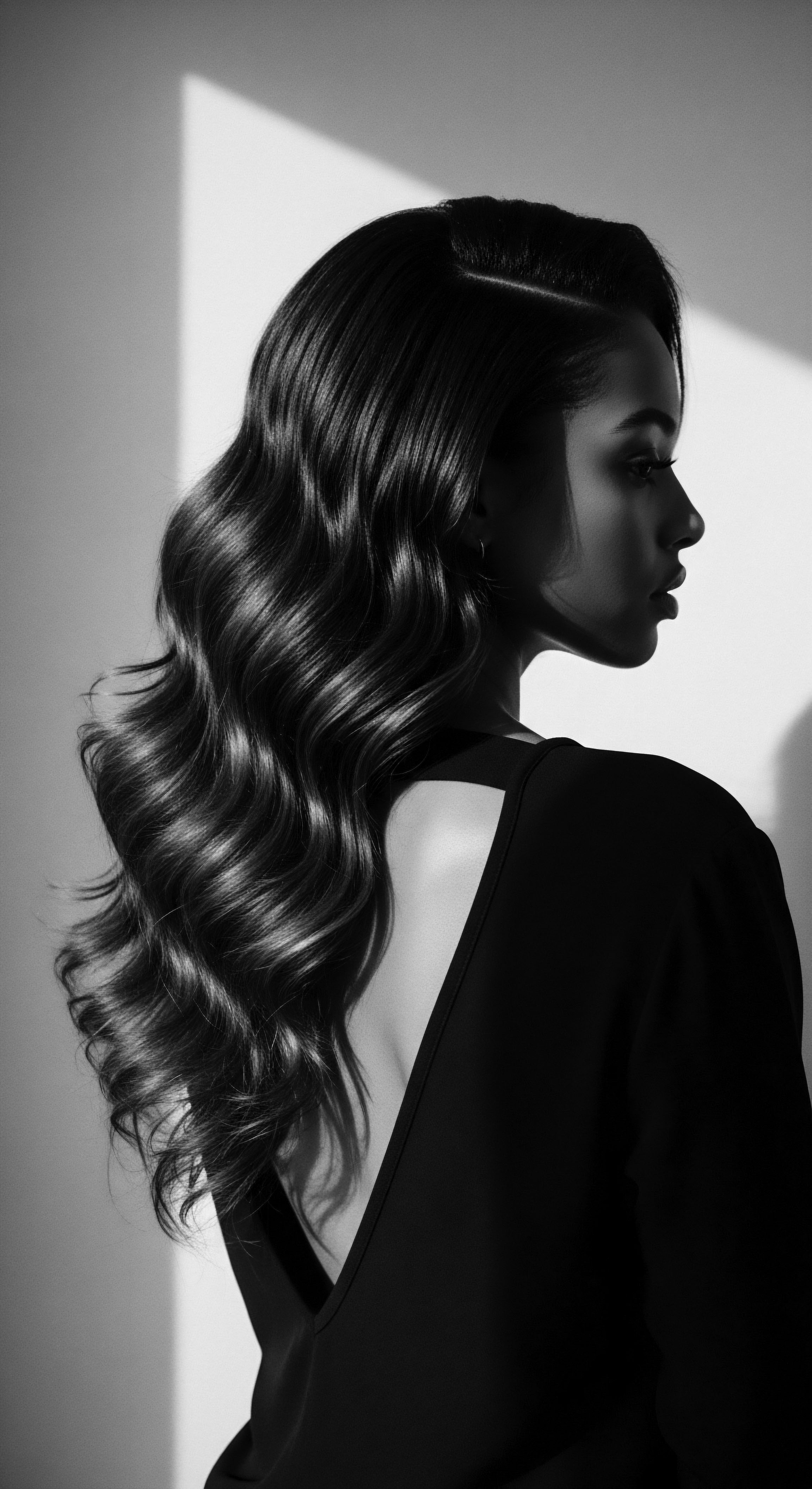
The Sacred Anatomy of Textured Hair
To appreciate how ancestral shea butter knowledge informs modern textured hair care, we must first truly see textured hair. Unlike straight or wavy hair, each coil, curl, and kink possesses a distinct elliptical follicle shape and a complex cuticle structure. This spiral nature means the natural oils produced by the scalp, sebum, struggle to travel down the hair shaft, leaving textured strands more prone to dryness and breakage. Ancient practitioners, without microscopes, observed these phenomena through generations of intimate engagement with hair.
They understood the propensity for dryness, the need for sealing in moisture, and the ways in which environmental factors affected the hair’s vitality. This observational wisdom led them to seek natural remedies that could address these specific characteristics.
Shea butter, known as “women’s gold” in many West African cultures, was not just an arbitrary choice; its emollient properties and rich composition were intuitively understood to address the very concerns posed by the structural realities of textured hair. They saw how a generous application smoothed the hair shaft, lent a protective sheen, and helped maintain softness, particularly crucial in dry climates. This practical application, born of keen observation, laid the groundwork for our current scientific understanding of emollients and their role in hair health.

Traditional Classifications of Textured Hair
Before standardized numerical systems, African communities categorized hair types through descriptive terms, often linked to lineage, region, or even social roles. These classifications were rooted in sensory experience ❉ the way hair felt, its elasticity, how it held a style, its response to moisture, and its sheen. They were less about rigid types and more about a spectrum of natural variation within a community. For instance, some hair might be described as “tightly coiled like a ram’s horn,” while another might be “soft as new cotton.” These descriptive frameworks guided care practices.
If a child’s hair was particularly dry or prone to tangles, a community member knew instinctively that more shea butter, perhaps mixed with other oils, was needed. This holistic approach recognized individuality within broader communal understanding.
Ancestral hands, through generations of keen observation, intuitively grasped the unique needs of textured hair, long before scientific diagrams revealed its microscopic structure.
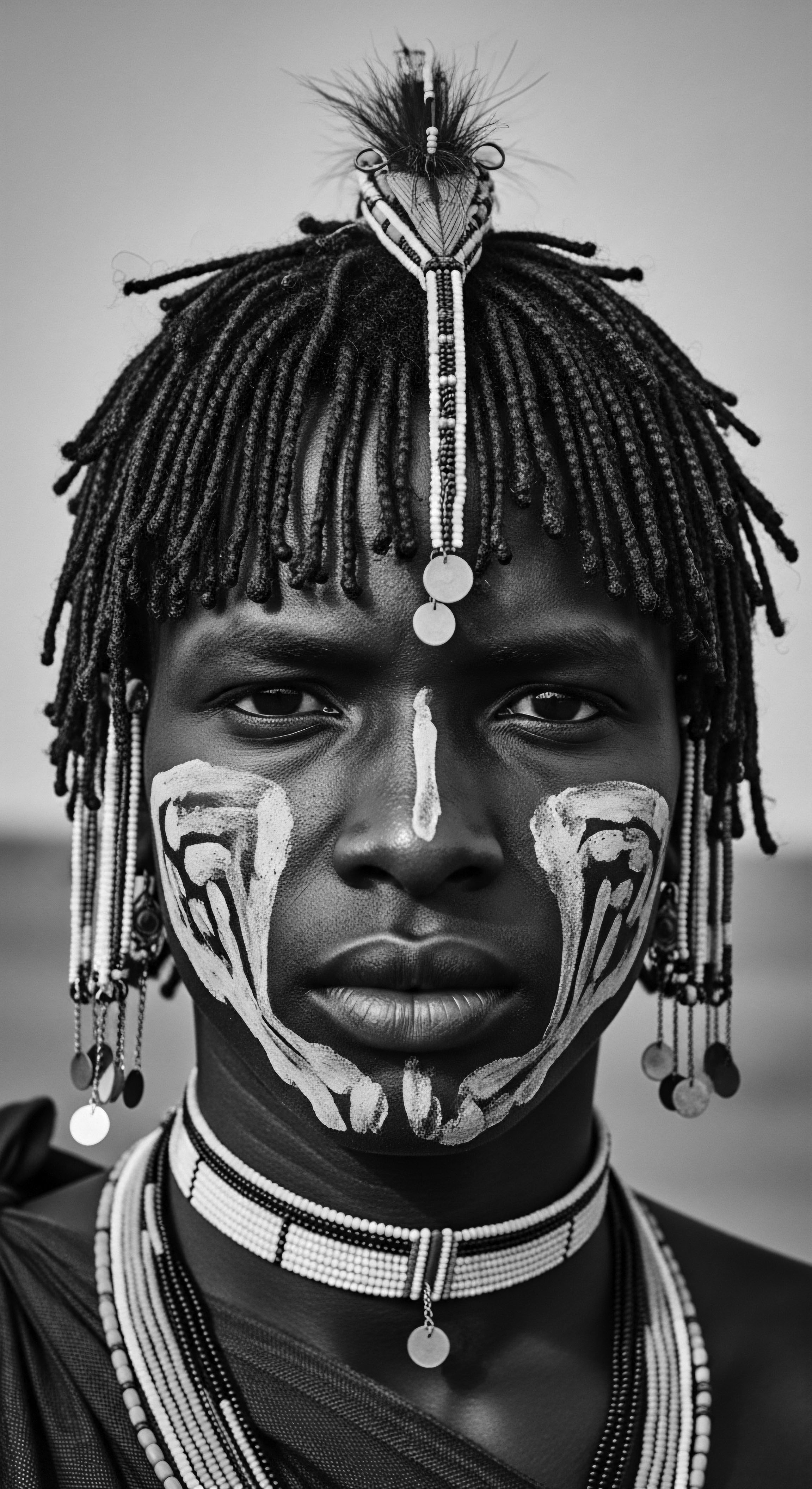
Hair Growth Cycles and Ancestral Rhythms
Communities across Africa held a profound respect for the cyclical nature of life, and this extended to understanding hair growth. They recognized periods of shedding, growth, and rest. Factors like diet, communal health, and even spiritual well-being were seen as interconnected with the hair’s vitality. Seasonal shifts often dictated hair care practices, with richer, heavier butters applied during dry seasons to provide a protective barrier.
Shea butter, often a staple in local diets and topical applications, played a dual role, providing both internal nourishment and external protection. The sustainability of shea butter production itself, primarily managed by women, speaks to an ancestral practice that revered natural resources and understood their cycles of regeneration. Indeed, the shea tree, or Vitellaria paradoxa, can take up to 50 years to mature and bear fruit, yet it can continue to produce for another five decades, highlighting a generational wisdom in resource management.
| Aspect of Hair Hair Structure |
| Ancestral Perspective (Informed by Shea Butter) Understood through tactile experience and visual observation of dryness and coiling patterns, leading to use of emollients. |
| Modern Scientific Perspective Microscopic analysis of elliptical follicles, cuticle layers, and the challenges of sebum distribution on spiral strands. |
| Aspect of Hair Hair Needs |
| Ancestral Perspective (Informed by Shea Butter) Recognized as requiring softening, lubrication, and protection from sun and dryness, directly addressed by shea butter's properties. |
| Modern Scientific Perspective Scientific validation of shea butter's fatty acid content (oleic, stearic acid) and vitamins (A, E) for moisturizing and protective effects. |
| Aspect of Hair Hair Health Indicators |
| Ancestral Perspective (Informed by Shea Butter) Observed through sheen, softness, manageability, and absence of breakage, reflecting vitality and proper care with natural elements. |
| Modern Scientific Perspective Evaluated through protein integrity, moisture content, elasticity tests, and scalp microbiome analysis. |
| Aspect of Hair Care Philosophy |
| Ancestral Perspective (Informed by Shea Butter) Holistic, communal, and often ritualistic, viewing hair health as part of overall well-being and ancestral connection. |
| Modern Scientific Perspective Often product-driven, focused on specific chemical compounds and their targeted effects, increasingly incorporating holistic views. |
| Aspect of Hair This table illustrates how ancestral wisdom, particularly through the use of shea butter, laid foundational understandings of textured hair that modern science now often corroborates and expands upon, always with heritage as the guiding light. |
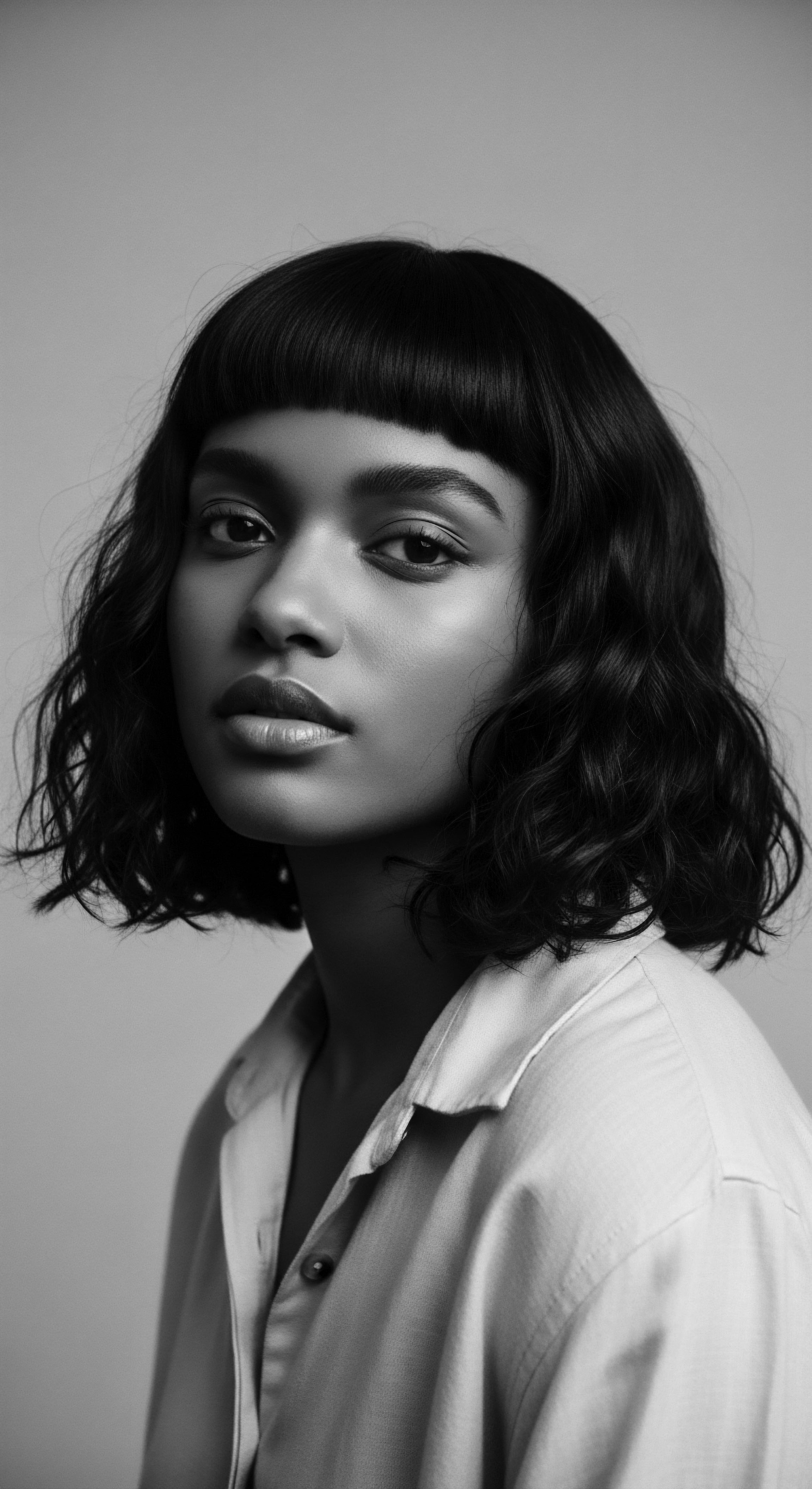
Ritual
The hands that kneaded shea butter were not merely preparing a cosmetic; they were engaging in a profound ritual, an act of storytelling and preservation. Hair styling, in ancient African and diasporic communities, was rarely a solitary endeavor. It was a communal practice, a tender thread connecting generations, where techniques and stories flowed from elder to youth.
Within these intimate gatherings, shea butter played a central role, its rich presence woven into the very fabric of heritage styles. These rituals, whether daily acts of tending or elaborate preparations for rites of passage, illustrate how ancestral knowledge of shea butter served as a practical foundation for the art and science of textured hair styling.

Protective Styling as Ancestral Ingenuity
Protective styles—braids, twists, cornrows, and bantu knots—are not modern inventions. They are a testament to ancestral ingenuity, born from a deep understanding of how to safeguard textured hair from breakage and environmental stressors. Archaeological evidence, such as a rock painting from 3500 BCE in the Sahara desert depicting a woman with cornrows, points to their ancient origins. Before these intricate styles could be crafted, the hair required preparation.
Shea butter, softened between palms, provided the essential slip and moisture needed to detangle strands gently, making them pliable for braiding or twisting. Its unctuous texture acted as a sealant, locking in hydration during the weeks or months these styles were worn, thereby minimizing friction and breakage. This ensured the longevity and protective qualities of the hairstyles, reflecting a continuity of care rooted in preserving the hair’s health.

Natural Styling Techniques
The quest for defining and enhancing natural curl patterns is an ancient one. Long before the advent of modern gels and creams, communities relied on natural butters and oils to achieve definition and hold. Shea butter was central to this. After washing, or simply dampening the hair, a carefully measured amount of shea butter would be worked through the strands.
This application would encourage curls to clump, lending them a natural sheen and elasticity. The gentle weight of the butter also helped to minimize frizz, an ever-present consideration for textured hair. This ancestral method of “setting” hair with shea butter laid the groundwork for today’s “wash and go” and “twist-out” techniques, revealing how contemporary practices often echo these time-honored approaches.
- Palm Shaping ❉ Ancestors used the warmth of their hands, coated with shea butter, to coil and define individual curls, a direct precursor to modern finger coiling.
- Braid-And-Twist Preparations ❉ Before braiding or twisting, shea butter was applied to each section, enhancing moisture retention and reducing friction during the styling process.
- Gloss and Seal ❉ A final light layer of shea butter provided a protective barrier against dust and sun, while giving the finished style a healthy, luminous appearance.

How Does Ancestral Tool Use Connect to Shea Butter’s Role?
The tools of ancestral hair care—from wide-toothed wooden combs to decorative hair picks—were extensions of the hands that wielded them. Shea butter served as a vital partner to these implements. When detangling, a generous application of shea butter would soften the hair, allowing combs to glide through with less resistance, thereby preventing painful tugging and breakage. Its presence on the hair also meant less static and more control during styling.
Beyond practicality, the communal act of one person styling another’s hair, often with shea butter, reinforced social bonds. This shared experience transformed a simple grooming act into a moment of cultural transmission, where narratives, songs, and communal wisdom were exchanged, all under the gentle aroma of the karité.
The rhythmic application of shea butter transformed the styling of textured hair into a sacred, communal practice, where each braid and twist became a visible symbol of heritage.
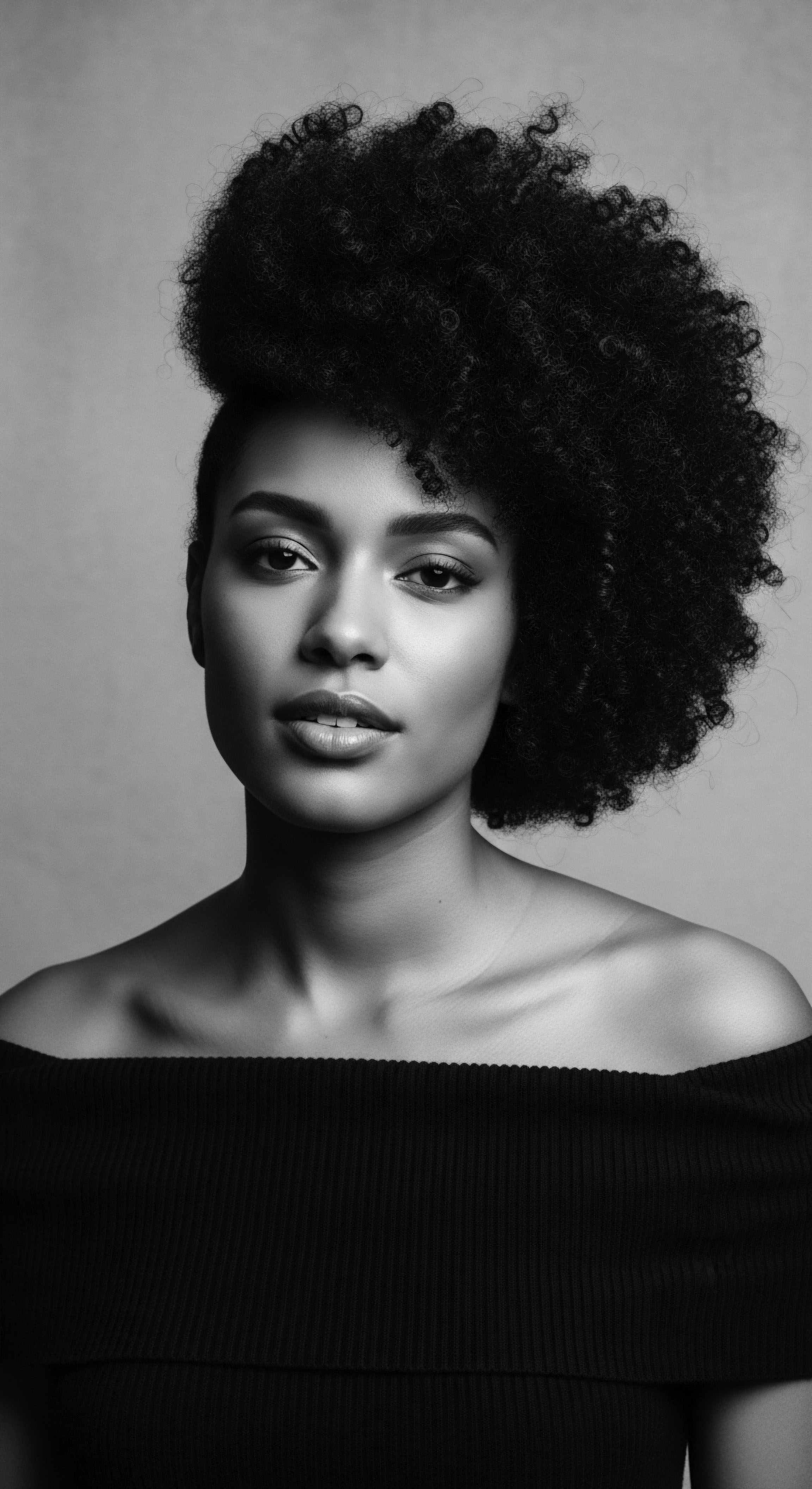
Wigs and Adornments with Heritage Links
The history of hair adornment in African cultures is rich and varied. Wigs, hair extensions, and intricate adornments like beads, cowrie shells, and gold thread were used not only for beauty but also to signify social status, age, marital status, or tribal affiliation. Shea butter, in its historical context, would have been used to prepare natural hair for these additions, providing a clean, moisturized base that would accept extensions smoothly and help preserve the integrity of the wearer’s natural hair underneath.
Its use ensured that hair remained pliable, reducing damage from the tension and weight of elaborate hairstyles and adornments. This practice illustrates an early understanding of hair protection, a wisdom that informs contemporary approaches to wearing extensions with minimal stress to one’s natural strands.
| Styling Element Hair Preparation |
| Ancestral Practice with Shea Butter Shea butter softened hair for easier detangling with wooden combs, reducing pain and breakage before braiding. |
| Modern Application Informed by Heritage Pre-poo treatments and leave-in conditioners with shea butter for moisture, elasticity, and reduced friction during styling. |
| Styling Element Style Longevity |
| Ancestral Practice with Shea Butter Applied as a sealant to braids and twists, extending the life of protective styles in challenging climates. |
| Modern Application Informed by Heritage Styling creams and butters containing shea to define curls, reduce frizz, and prolong style definition. |
| Styling Element Defining Texture |
| Ancestral Practice with Shea Butter Used to clump curls and impart a natural sheen for "wash-and-go" styles, pre-dating commercial products. |
| Modern Application Informed by Heritage Modern curl definers and custards formulated with shea butter to enhance natural patterns without heavy residue. |
| Styling Element The enduring utility of shea butter highlights a profound continuity in how textured hair has been styled and cared for across historical eras, always prioritizing health and preservation. |

Relay
The enduring journey of shea butter, from the hands of ancestral women to the laboratories of modern cosmetic science, represents a profound relay of knowledge. This is not a simple linear progression, but a continuous dialogue between inherited wisdom and contemporary discovery. The insights gleaned from generations of shea butter use inform the very core of modern textured hair care, particularly concerning holistic regimens, nighttime rituals, and targeted problem-solving. It demonstrates a deep, interconnected understanding that bypasses surface-level trends, focusing instead on the intrinsic needs of textured strands and scalp health, rooted in a collective heritage.

Building Personalized Regimens From Ancestral Wisdom
The concept of a personalized hair regimen, tailored to individual needs, finds its deepest roots in ancestral practices. In West African communities, hair care was never a one-size-fits-all endeavor. Elders and community practitioners recognized that each person’s hair possessed distinct qualities, influenced by lineage, environment, and even age. They observed how different textures responded to varied applications of shea butter, sometimes pure, sometimes blended with other natural oils or herbs.
This bespoke approach, refined through oral traditions and lived experience, allowed for highly specific solutions. Modern hair care, with its emphasis on custom blends and individual hair typing, echoes this ancient wisdom. Shea butter’s versatility allows it to serve as a foundational ingredient, adaptable for diverse needs, from a pre-wash treatment to a rich sealant for hydration, mirroring its historical adaptability across varying hair textures.
Modern scientific analyses now confirm the wisdom of these ancestral methods. Unrefined shea butter is rich in a spectrum of fatty acids, including oleic and stearic acids, which are crucial for moisture retention and creating a protective barrier on the hair shaft. Beyond lipids, it contains vitamins A and E, supporting scalp health and cellular regeneration. These components provide the scientific rationale for shea butter’s effectiveness, validating what generations of users intuitively understood.
For example, a 2016 ethnographic study by Colleen Claire Naughton revealed the vital role of shea butter in West African women’s livelihoods, extending beyond commerce to include its integral role in social bonding and all religious and traditional ceremonies, including a special shea ceremony. This speaks to its deeply embedded status, not just as a product, but as a cultural cornerstone.
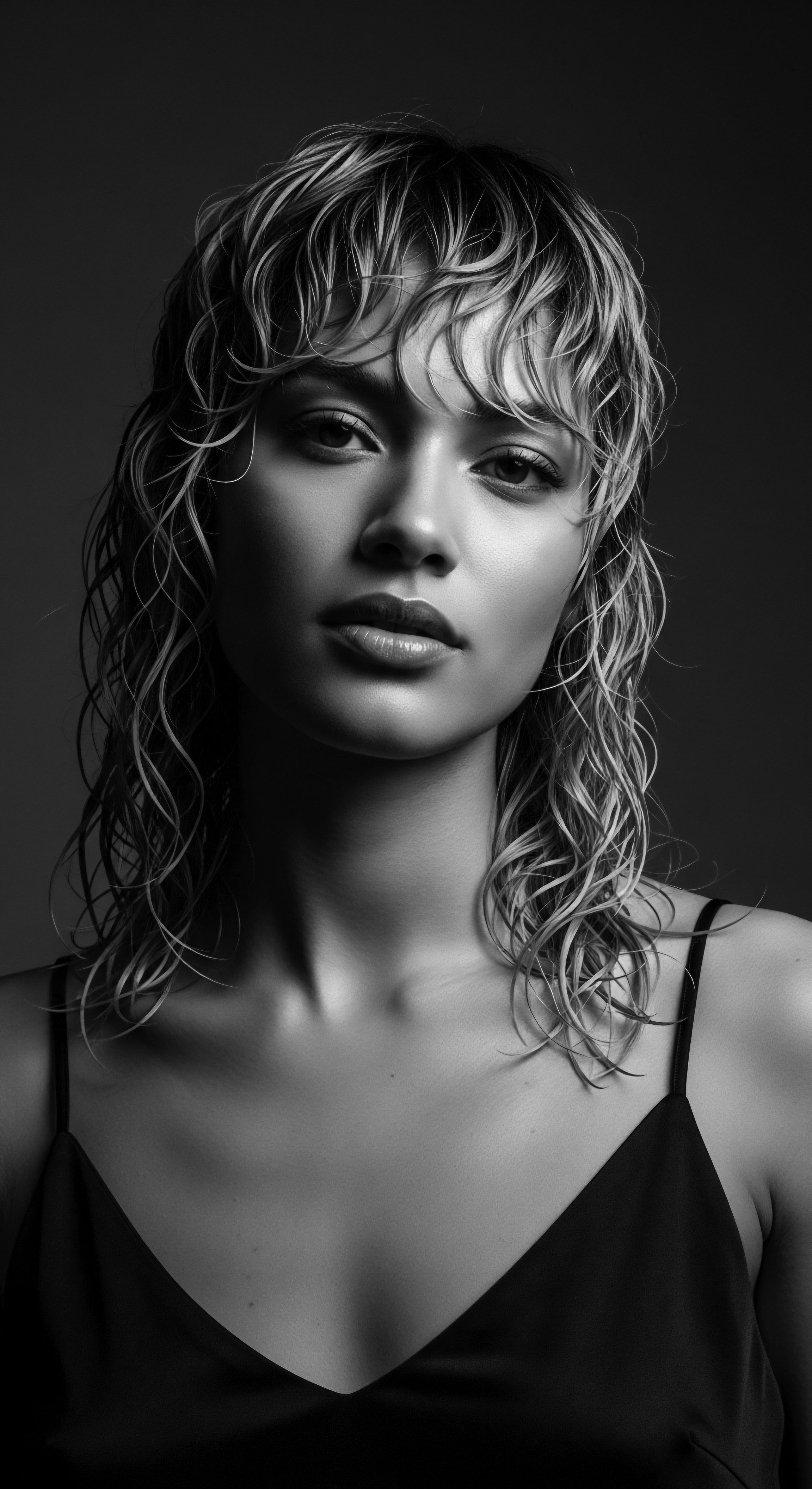
The Nighttime Sanctuary ❉ Bonnet Wisdom
The practice of protecting hair at night, often through intricate wraps or specialized coverings, is a deeply embedded aspect of textured hair heritage. This wisdom, passed down through generations, understood the importance of minimizing friction and maintaining moisture during sleep. Before the modern silk bonnet, headwraps and various cloth coverings, known as Dukus or Doek in some African traditions, served this purpose. These coverings shielded hair from the absorbent nature of cotton pillows, preventing dryness and tangles.
Shea butter often accompanied this ritual. A light application before wrapping would provide an overnight conditioning treatment, allowing its rich emollients to penetrate and nourish the strands undisturbed. This ancient foresight in preserving hair health during rest directly informs the widespread use of satin and silk bonnets, scarves, and pillowcases today, all designed to safeguard delicate hair structures and extend the life of styles. The history of the bonnet itself, while evolving through various cultural contexts, holds a particularly profound significance for Black women, often symbolizing both cultural resilience and self-care.
The connection between shea butter application and nighttime protection creates a cyclical approach to hair health ❉ cleansing, moisturizing, styling, then protecting. This cycle reflects a holistic understanding of hair care as an ongoing commitment to well-being, rather than sporadic treatments.

Deep Dives for Textured Hair Needs
The effectiveness of shea butter for textured hair can be attributed to its unique biochemical profile. It contains a significant unsaponifiable fraction—components that do not convert to soap when exposed to alkali—which includes triterpenes, tocopherols, phenols, and sterols. These compounds contribute to its healing, anti-inflammatory, and antioxidant properties, making it more than just a moisturizer.
Consider how these ancestral insights translate into modern understanding:
- Moisture Retention ❉ The fatty acids, particularly stearic and oleic acids, create a barrier that seals moisture into the hair shaft, a property intuitively recognized by ancestors who battled arid climates. This protective quality is why shea butter excels at preventing dryness and brittleness.
- Scalp Wellness ❉ Its anti-inflammatory and antimicrobial properties address scalp irritation, flaking, and itching. Ancestral wisdom applied shea butter directly to the scalp for these concerns, a practice now supported by studies indicating its capacity to soothe an irritated scalp and even reduce certain types of hair loss associated with inflammation.
- Hair Elasticity ❉ Regular application of shea butter enhances hair elasticity, minimizing breakage and split ends, an outcome observed and valued in traditions focused on retaining hair length and strength.

Textured Hair Problem Solving
Ancestral knowledge provided foundational solutions to common textured hair challenges. Dryness, breakage, and scalp irritation were addressed with natural remedies, and shea butter stood at the forefront. For brittle strands, it was warmed and massaged in as a restorative treatment.
For itchy scalps, it was applied to soothe and cleanse. This problem-solving approach was experiential and handed down, with specific application methods developed through trial and communal wisdom.
Modern solutions continue this legacy. Products formulated with high concentrations of shea butter target these same issues. Whether in leave-in conditioners, deep conditioning masks, or styling creams, shea butter’s ability to deeply hydrate, seal the cuticle, and calm the scalp offers direct continuity with traditional uses. Its semi-solid form at room temperature also allows for easy blending, reflecting the ancestral practice of combining it with other natural ingredients.

How Do Holistic Influences Shape Modern Care?
Hair care, within many ancestral African frameworks, was rarely separated from holistic well-being. It was intertwined with diet, community health, spiritual practices, and rites of passage. The health of one’s hair was seen as a reflection of internal balance and external harmony. Shea butter, as a staple both in cooking and topical application, served as a tangible link between these aspects.
Its consumption contributed to overall health, which in turn supported hair vitality, while its topical use provided direct nourishment. This integrated perspective, where external appearance is a mirror of internal balance, shapes modern holistic hair care. It encourages consideration of nutritional intake, stress levels, and gentle handling, mirroring the ancestral understanding that true radiance springs from within and is nurtured by mindful practices, a profound heritage that defines the ‘Soul of a Strand’.
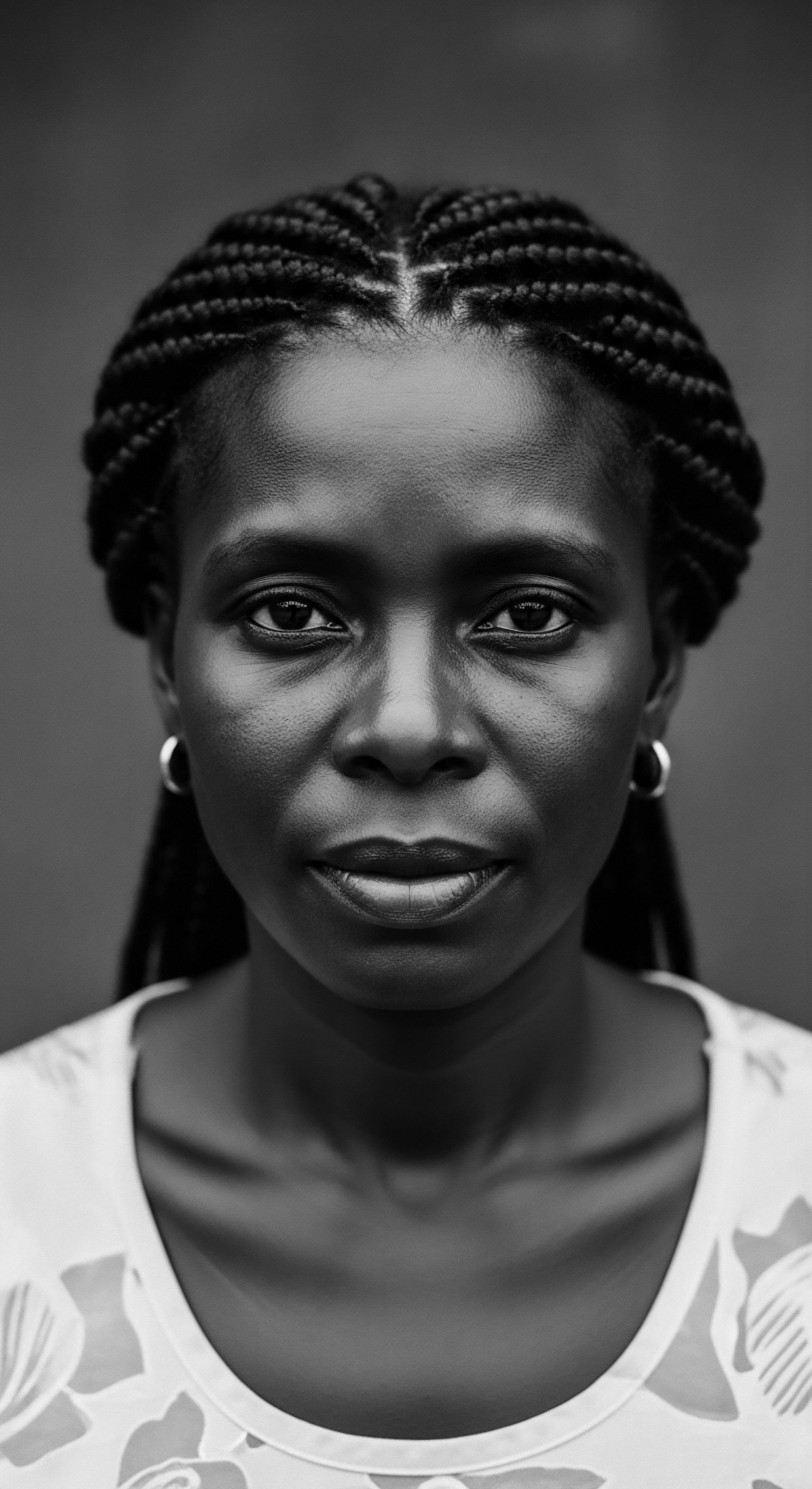
Reflection
The golden butter from the karité tree, a sacred gift from West African lands, is far more than an ingredient; it is a living testament to an enduring heritage. Its journey from ancestral hands, patiently processing the nuts beneath ancient suns, to its revered place in modern textured hair care, mirrors the resilience and profound wisdom embedded within Black and mixed-race hair traditions. Each application of shea butter today carries echoes of generations past—a whisper of communal care, a memory of self-sustenance, and a celebration of natural beauty deeply rooted in the earth.
This is the true spirit of a strand ❉ not merely a biological structure, but a vessel of history, culture, and identity. The intuitive knowledge that recognized shea butter’s ability to protect, soften, and nourish textured hair, before the advent of scientific laboratories, speaks to a profound understanding of nature’s offerings. It reminds us that our most innovative solutions often reside in the deepest wellsprings of our past. Shea butter, then, stands as a symbol of continuity, a bridge connecting the wisdom of our forebears with the aspirations for future generations, ensuring that the legacy of textured hair care remains vibrant, informed, and truly luminous.

References
- Abdullah, Mariam. “Ancient African Hair Growth Secrets For Healthy Hair.” Sellox Blog, June 4, 2021.
- Afriklens. “African Hairstyles ❉ Cultural Significance and Legacy.” Afriklens, November 1, 2024.
- Chalfin, Brenda. Shea Butter Republic. Routledge, 2004.
- Haku Holistics. “The Art of African Braiding ❉ A Historical Deep Dive.” Haku Holistics, November 4, 2023.
- Healthline. “Shea Butter for Hair ❉ Raw, Hair Growth, and Natural Hair.” Healthline, March 13, 2018.
- MyHair.ai. “Ultimate Shea Butter for Hair Growth ❉ 2025 Expert Tips.” MyHair.ai, April 28, 2025.
- Naughton, Colleen Claire. “Modeling Food Security, Energy, and Climate and Cultural Impacts of a Process ❉ the Case Study of Shea Butter in Sub-Saharan Africa.” Dissertation, University of South Florida, 2016.
- Noireônaturel. “African braids ❉ a timeless heritage of beauty and cultural significance.” Noireônaturel, January 2, 2024.
- Paulski Art. “The Rich History of Shea Butter and Its Origins.” Paulski Art, February 14, 2024.
- Team True Beauty. “The Significance and History of Black People Bonnets.” Team True Beauty, December 7, 2023.
- The Gale Review. “African Hairstyles – The “Dreaded” Colonial Legacy.” The Gale Review, November 23, 2021.
- WAAM Cosmetics. “Everything you need to know about the benefits of Shea butter.” WAAM Cosmetics.
